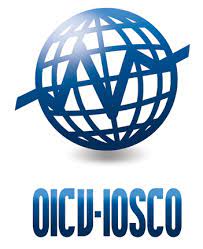The International Organization of Securities Commissions (IOSCO) is the latest regulator to find ETFs passed a significant stress test with flying colours during the COVID-19 induced sell-off last year.
The global regulatorjoins industry bodiessuch as the Bank of England, Autorité des Marchés Financiers (AMF), the Bank for International Settlements (BIS), the Investment Association and the European Systemic Risk Board (ERSB) in claiming there are “no imminent risks” with ETFs from a financial stability perspective.
The report, titledExchange Traded Funds Thematic Note – Findings and Observations during COVID-19 induced market stresses, follows data analysis compiled by IOSCO’s committee of investment management (C5), responses to a survey from C5 members andresponses from industry participants.
During the period of rapidly vanishing liquidity in March 2020, fixed income ETFs started trading at significant discounts to net asset values (NAVs) leading many critics to argue this highlighted frailties in the ETF structure.
In fact, IOSCO found the price dislocations represented uncertainty in the valuation of the underlying bonds with NAVs quickly becoming stale as the securities were not trading.
Highlighting this, the iShares $ Corp Bond UCITS ETF (LQDE) changed hands 1,000 times on 12 March while its underlying securities traded just 37 times over the same period, according to data from BlackRock.
With investors actively trading ETFs on the secondary market, IOSCO said ETFs provided an indication of the aggregate value of the underlying bonds.
“As a result, secondary market prices of fixed income ETFs incorporated more timely information about the value of underlying bonds held by such ETFs, including the cost to trade the underlying bonds under prevailing market conditions,” the regulator added.
Furthermore, while there were increased costs for trading fixed income ETFs due to the rapidly vanishing liquidity, the bid-ask spreads generally “remained narrower” than those of the underlying bonds which implies ETFs “were a more cost-efficient trading tool” during the market stress, IOSCO said.
“Based on the analysis and findings as outlined in this note, no imminent risks associated with these observations have been identified from a regulatory or financial stability perspective,” the report said.
“In particular, it highlighted that the pricing of ETFs could be different when the liquidity of their underlying assets deteriorated significantly and deepened the industry’s understanding of fixed income ETFs’ potential role in providing additional pricing information for the underlying bond markets.
“Moreover, it demonstrated the utility of the additional layer of liquidity provided by ETF secondary markets.”
Attention now turns to later in the year when IOSCO will consult with the industry on ETF policy proposals in late 2021/H1 2022 as part of its broad analysis of the ETF market.



